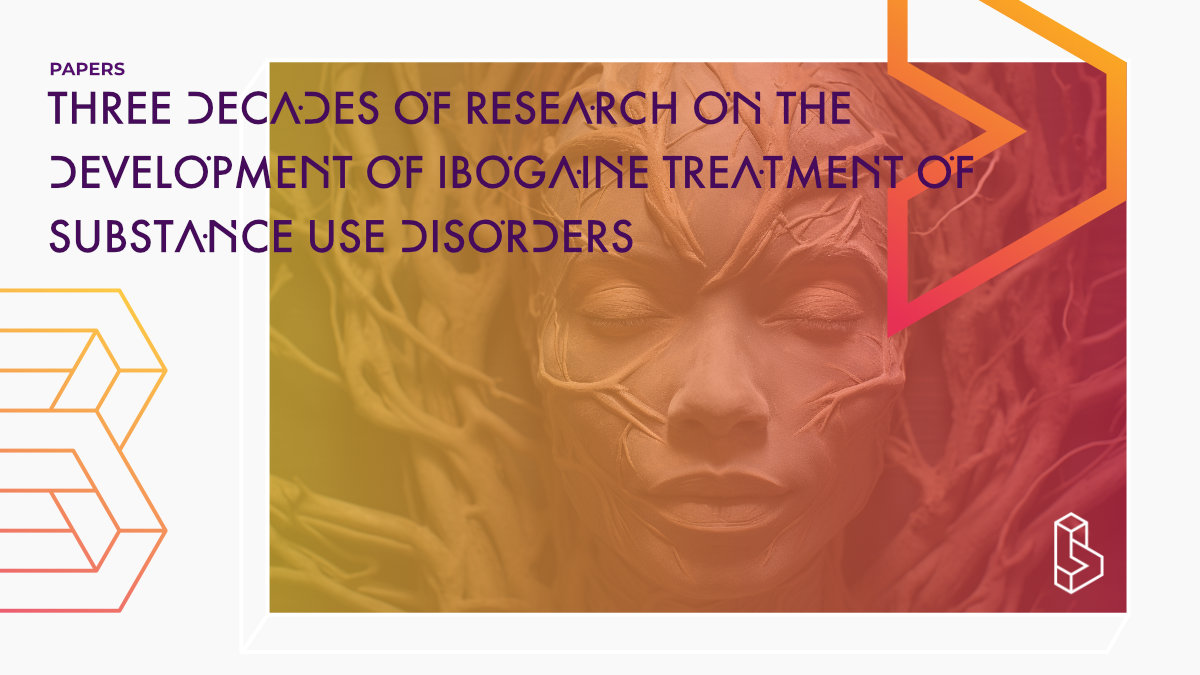This review (2023) examines the interest in ibogaine’s therapeutic potential for substance use disorders over three decades (1993–2022). The study identifies a linear growth of publications in the first and third decades, with academic research centers in the United States and Canada being the most productive. Major keywords shifted from cocaine, tobacco, morphine, and alcohol in the first two decades to opioids and psychedelics in the third decade, indicating evolving research trends.
Abstract of Three Decades of Research on the Development of Ibogaine Treatment of Substance Use Disorders
“Ibogaine is a natural psychoactive drug that has been investigated for its potential role in the treatment of substance use disorders since the mid-1960s. To evaluate the interest in ibogaine’s use as a therapeutic agent, we performed a scientometric analysis covering the last three decades (1993–2002, 2003–2012, and 2013–2022). A complementary analysis was performed to select and describe published clinical trials and meta-analyses. A total of 1523 references were found. Linear growth of publications in the first and third decades were identified, and the average number of publications from 1993 to 2002 was lower than that in the other two decades. Researchers from five continents were identified. Globally, academic research centers in the United States and Canada were the most productive. Cocaine, tobacco, morphine, and alcohol prevailed as major keywords in the first two decades and opioids and psychedelics were included in the third decade. A few key authors were the most co-referenced. One preclinical meta-analysis and no meta-analysis in humans were found. Research trends for ibogaine are widespread, growing, and consonant with current attentiveness in drug abuse. Our findings support the pressing need for rigorous clinical research on ibogaine to evaluate its efficacy and safety.”
Authors: Maria H. Fernandes-Nascimento, André B. Negrão, Karine Viana-Ferreira, Bruno Daniel R. Chaves & Wang Yuan-Pang
Summary of Three Decades of Research on the Development of Ibogaine Treatment of Substance Use Disorders
Estimates indicate that 5.5% of the world’s population uses drugs, and 271 million people have substance use disorders. These disorders impose a significant burden on healthcare systems worldwide.
Different medications are widely used in the treatment of SUDs, but some of these medications are insufficient to alleviate morbidity, mortality and the economic burden. Ibogaine is one of these alternatives of interest to scholars.
Ibogaine has emerged as an option for treating opioid and stimulant addiction. A synthetic alkaloid congener of ibogaine, 18-methoxycoronaridine (18-MC), has also been tested in animal models for treating psychiatric disorders and SUDs.
Find this paper
https://doi.org/10.1080/02791072.2023.2276230
Paywall | Google Scholar | Backup | 🕊
Cite this paper (APA)
Fernandes-Nascimento, M. H., Negrão, A. B., Viana-Ferreira, K., Chaves, B. D. R., & Yuan-Pang, W. (2023). Three Decades of Research on the Development of Ibogaine Treatment of Substance Use Disorders: A Scientometric Analysis. Journal of Psychoactive Drugs, 1-11.
Study details
Compounds studied
Ibogaine

